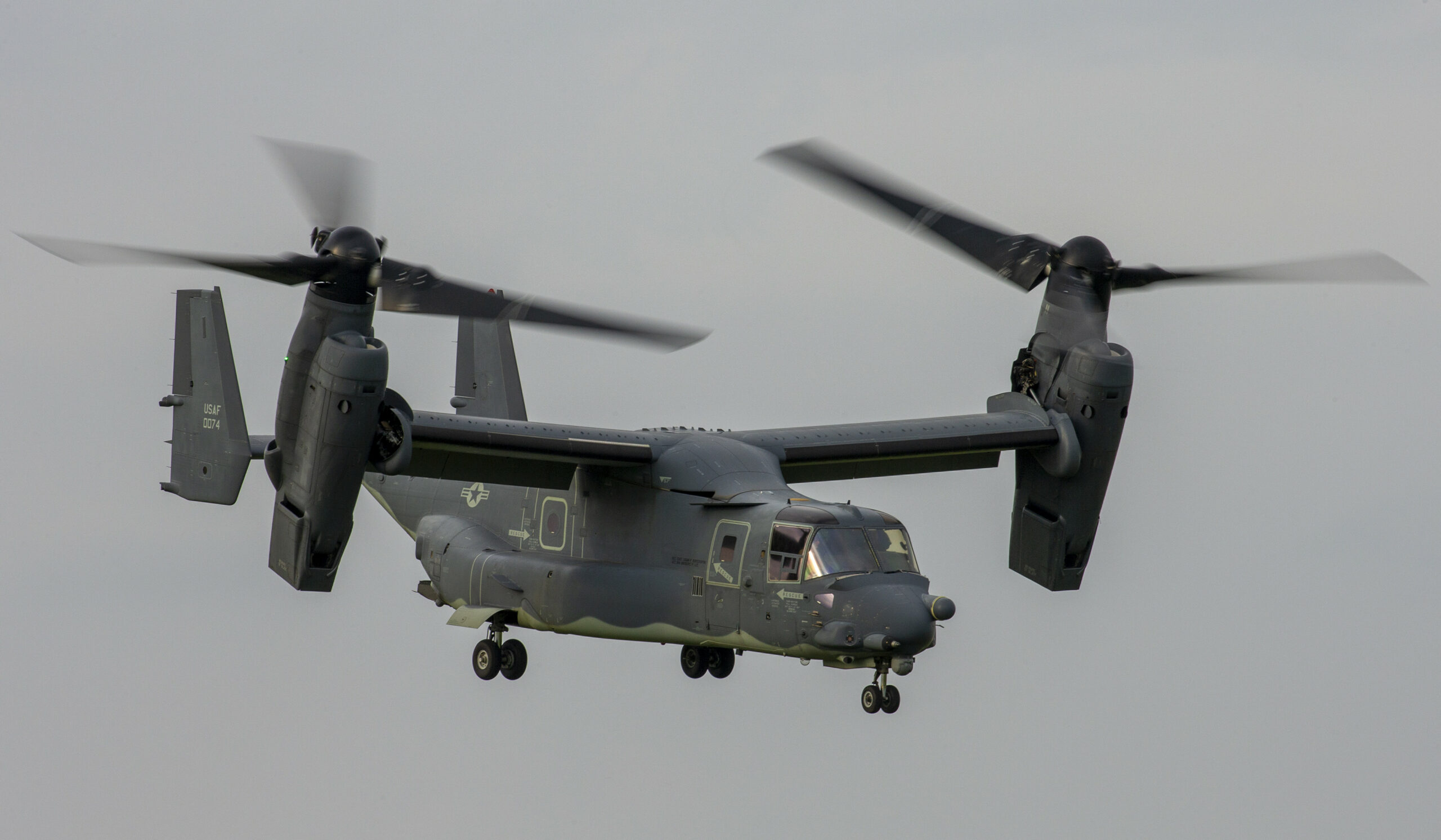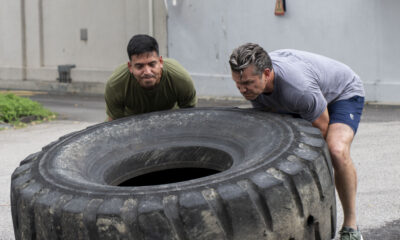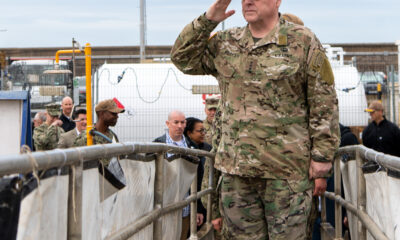Guest Columns
How the CV-22 Osprey has Transformed Special Operations

I’ll never forget the conversation I had with my commander at dinner one night in 2007 at Balad Air Base, Iraq. He asked me what I wanted to do next after the retirement of my current special operations helicopter. During that dinner, he and a good friend of mine filled my mind with ideas on the CV-22 Osprey mission. This event kick-started dreams of how this game-changing platform would shape the future of special operations vertical lift.
Changing the ground game
Today, after 15 years and over 2,000 hours of flying the Osprey aircraft and simulator, certification as an Evaluator Pilot and Flight Lead, and Commander of an overseas CV-22 squadron, I can say without hesitation the CV-22 Osprey made many of those dreams a reality.
Team Osprey recently celebrated the 35th anniversary of the V-22’s first flight. That historic take-off, hover and landing was only the beginning of what would become the development of advanced capabilities that would forever change the way the world looked at aviation and how the United States Department of Defense would solve some of the most difficult problems and impossible missions.
Over those thirty years, I’d like to highlight three specific aspects of the CV-22 and the Osprey Community that have come into reality.
The Osprey Community
First, the dedication, creativity and professionalism of the CV-22 community has been critical to establishing an outstanding track record of superior performance executing special operations missions at the highest levels – across the joint force.
An innovative and game-changing aircraft like the CV-22 in the hands of less dedicated teams would never solve the problems of emerging threats or take advantage of potential opportunities.
For fifteen years, I’ve watched creative, humble, professional, and credible aircrew and maintainers develop solutions that never existed before. These bottom-up driven solutions provided strategic leadership with novel ways to deter, delay and defeat our enemies, while enhancing force survivability.
Our community helped develop and solve problems when airdrop infiltrating special operations forces and equipment behind enemy lines and outside the distance of valid emergency response.
By combining heavy fixed-wing airdrop of equipment and a precision infiltration of personnel with CV-22s flying at similar airspeeds, special operations units now had an immediate exfil response should an injury arise, or mission-abort criteria emerge, post airdrop. This is but one of many tactics CV-22 crews developed, rehearsed, and executed.
The Osprey Reduces Risk
Second, the Osprey is first and foremost a risk-reduction platform. Naturally, V-22 advocates focus on speed and range comparisons as the aircraft’s primary value proposition. I certainly made those arguments early on in my flying career. However, as a commander, I learned that the exponential value of the CV-22 was reducing risk.
Militaries win campaigns through sustainment and logistics. As distance increases, logistics and sustainment requirements grow exponentially. In Iraq, Afghanistan, large swaths of Africa, and the Indo-Pacific regions, the use of V-22s has reduced minimum-force requirements, minimized force exposure time in contested areas, and increased logistic and supply line kill-chain stand-off distance.
With advanced defensive systems capable of countering Infrared and Radar Surface to Air Missile threats, the Osprey further reduces risk and ensures mission success.
Impossible Missions Made Possible
Third, over these past fifteen years, I have witnessed exquisitely trained and courageous CV-22 professionals combine aircraft capability and risk mitigation to execute missions no other aircraft could accomplish.
In 2010, a helicopter carrying 32 special operators crashed high in the Hindu Kush mountains of Afghanistan. With deteriorating weather conditions, extreme terrain and distance separating both a ground and rotary-wing recovery force, and troops in contact with the enemy, two CV-22 crews launched on an 800 nautical mile round-trip flight to rescue all 32 personnel.
In 2013, three CV-22s and a team of SEALs launched on an embassy evacuation rescue mission in Sudan. During the final approach, all three aircraft were engaged, taking nearly 200 rounds in a coordinated ground attack. With wounded personnel and aircraft leaking fuel, the three aircraft evacuated the area and flew an astounding thousand-mile journey back to safety. Thanks to exceptional airmanship and a highly survivable aircraft, all personnel survived disaster and those aircraft returned to combat flight status.
During a single period of darkness in 2020, four CV-22s and crews flew more than 2,000 miles over unforgiving African desert to execute the longest hostage rescue in Department of Defense history.
These are just three of dozens of missions where the lives of Americans and our Allies were saved.
The tiltrotor is the new king
Tiltrotor is a game-changing capability that provides unparalleled strategic advantages in the air, land, and maritime domains. I look forward to seeing exceptional crews back in the air flying this incredible aircraft.
We, the special operations aircrew and maintainers that fly and fix this amazing aircraft, are sincerely grateful to the thousands of hard working and innovative American engineers, designers and men and women on the assembly line who given this nation the competitive advantage provided by the Osprey!
When the CV-22 and the crews that fly and maintain it are put to the test and given a task that no other aircraft can accomplish, time and time again the result is a success.
The above article represents the views of the author and not the official views of the United States Air Force.
This article was originally published by RealClearDefense and made available via RealClearWire.
Lt Col Robert Meyersohn (U.S. Air Force) is a 20-year special operations pilot with 15 years of experience as a Flight Lead and Evaluator in the CV-22 Osprey pilot and a former Osprey squadron commander.
-

 Civilization2 days ago
Civilization2 days agoDC Pipe Bomb Arrest Raises Questions About Christopher’s Wray’s FBI
-

 Civilization5 days ago
Civilization5 days agoYoo Hoo, VP Vance—Your Character is Showing!
-

 Executive5 days ago
Executive5 days agoThe Last Supper: New York’s Socialist Feast
-

 Guest Columns4 days ago
Guest Columns4 days agoCongressional Leaders See Far Higher Stock Returns Than Peers
-

 Civilization3 days ago
Civilization3 days agoThe Legal Logic Behind U.S. Operations Against Narco-Terrorist Networks
-

 Civilization5 days ago
Civilization5 days agoFacing Facts & Rolling Back Mythologies: The New National Security Strategy
-

 Civilization4 days ago
Civilization4 days agoHow Trump Changed America
-

 Executive3 days ago
Executive3 days agoNewsom’s ‘National Model’ for Homeless Wracked by Fraud









